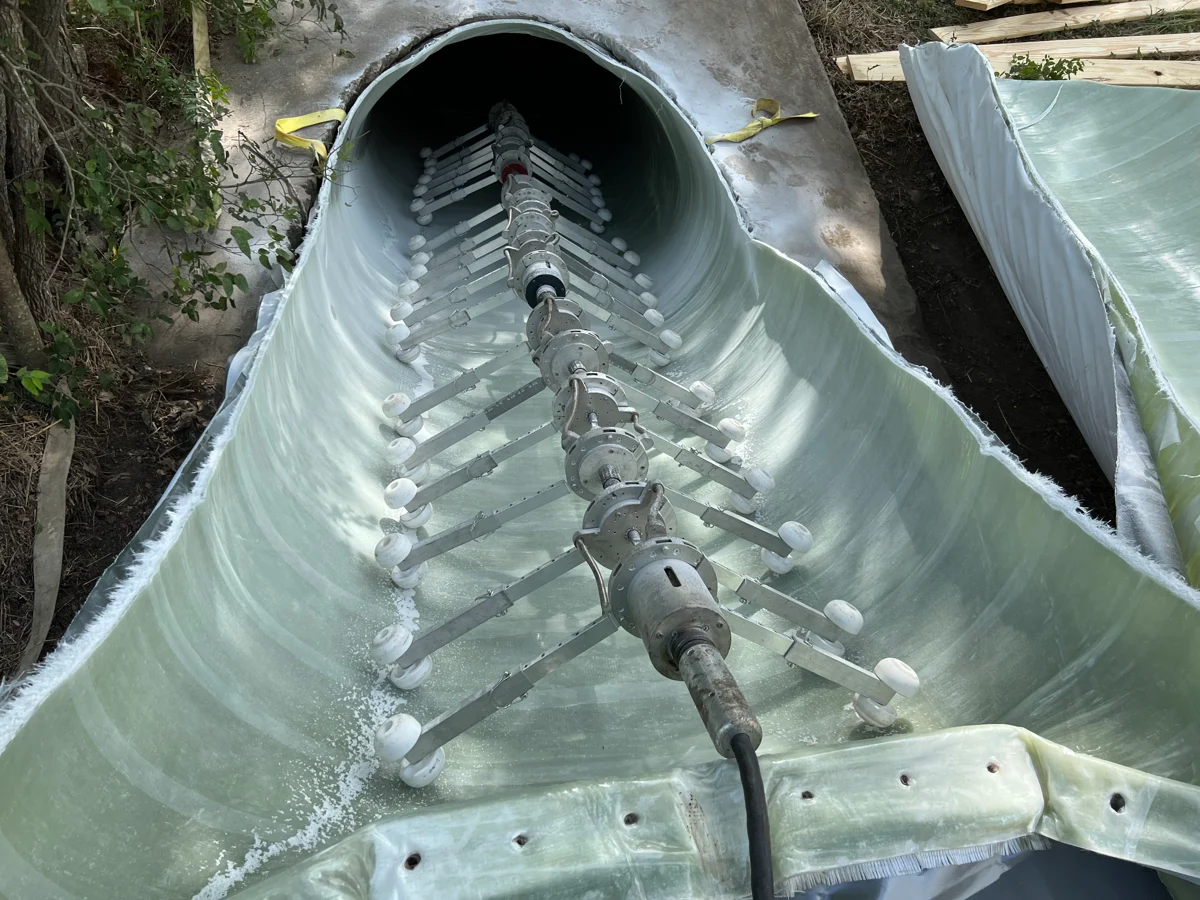
Caltrans Drainage Line
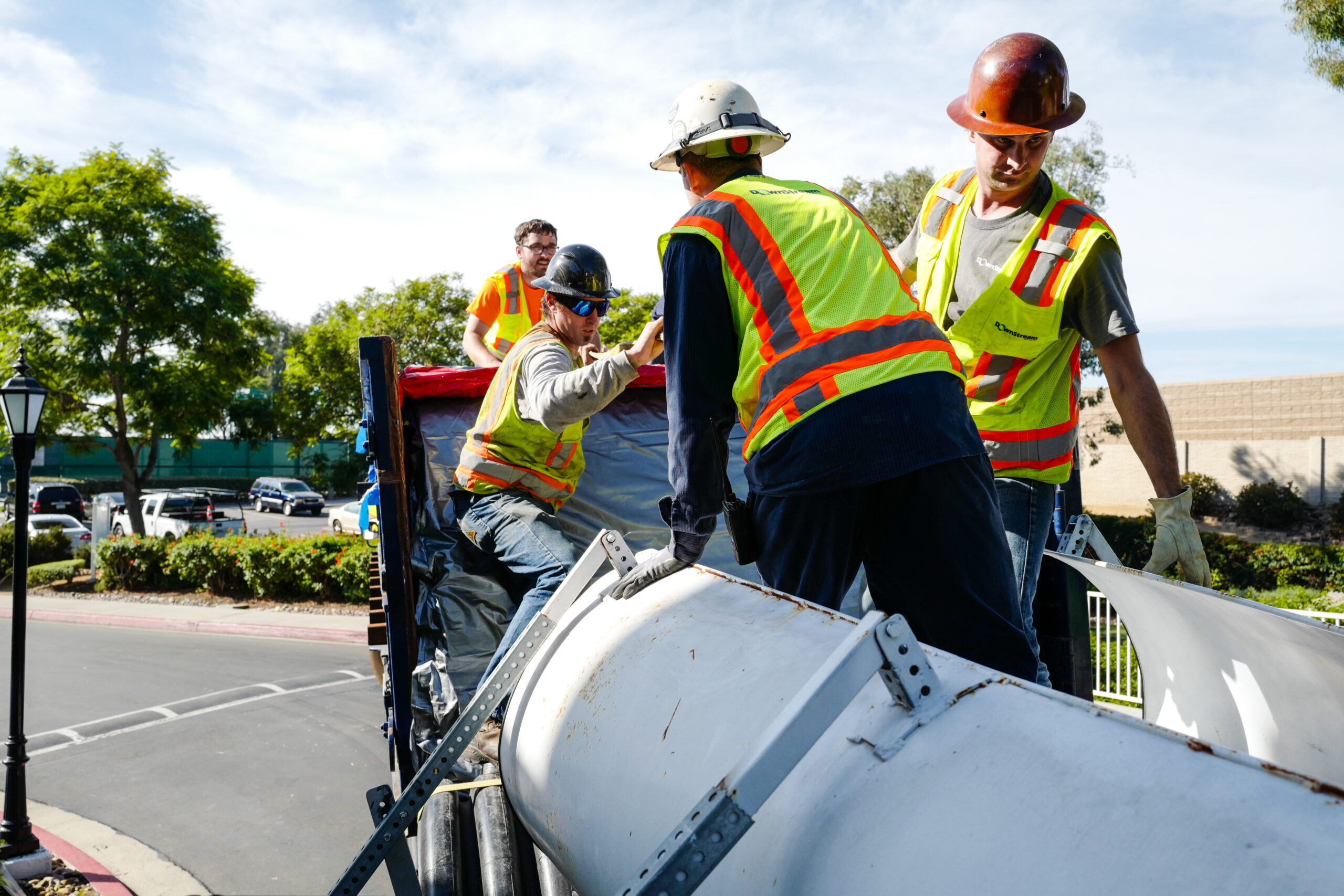
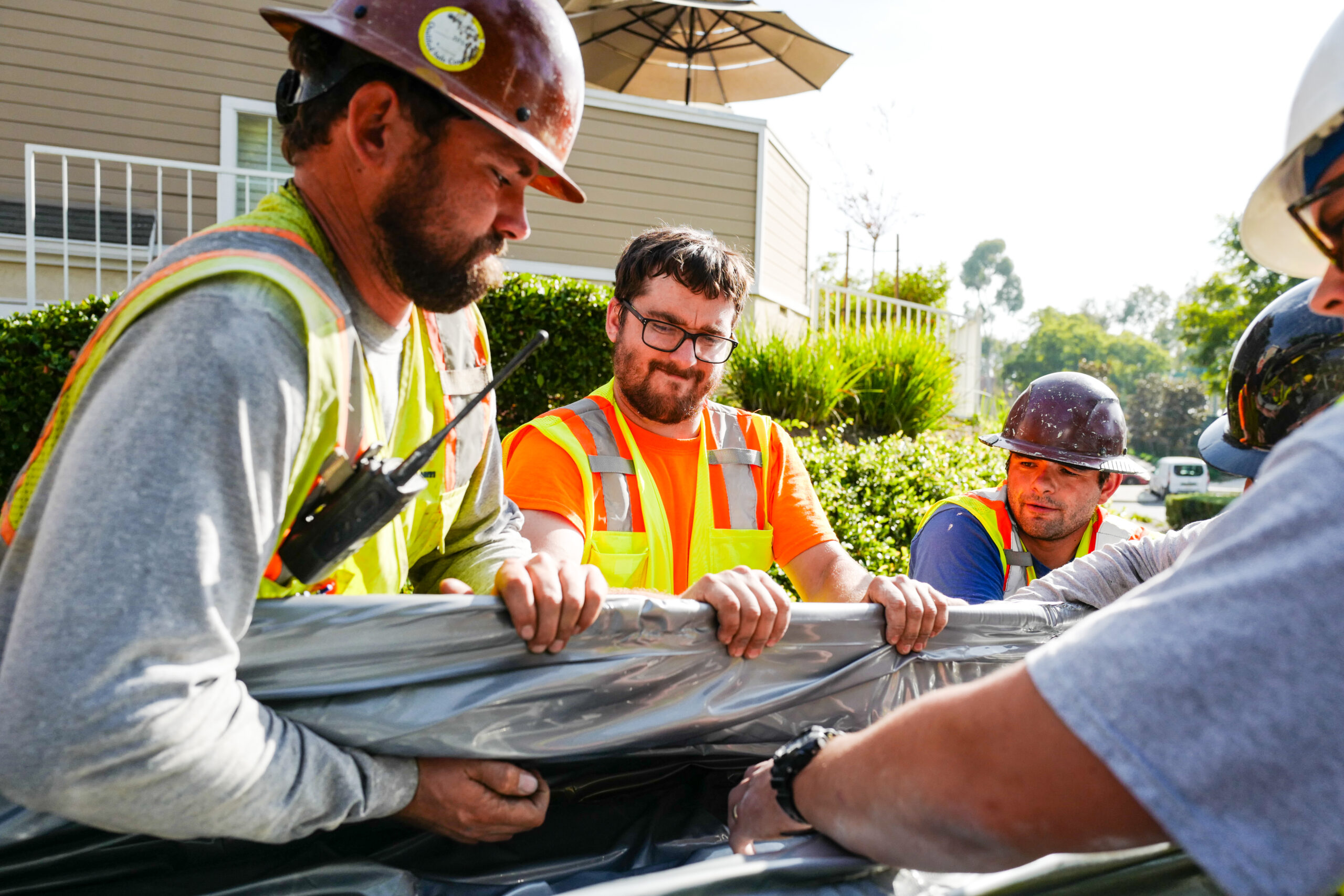
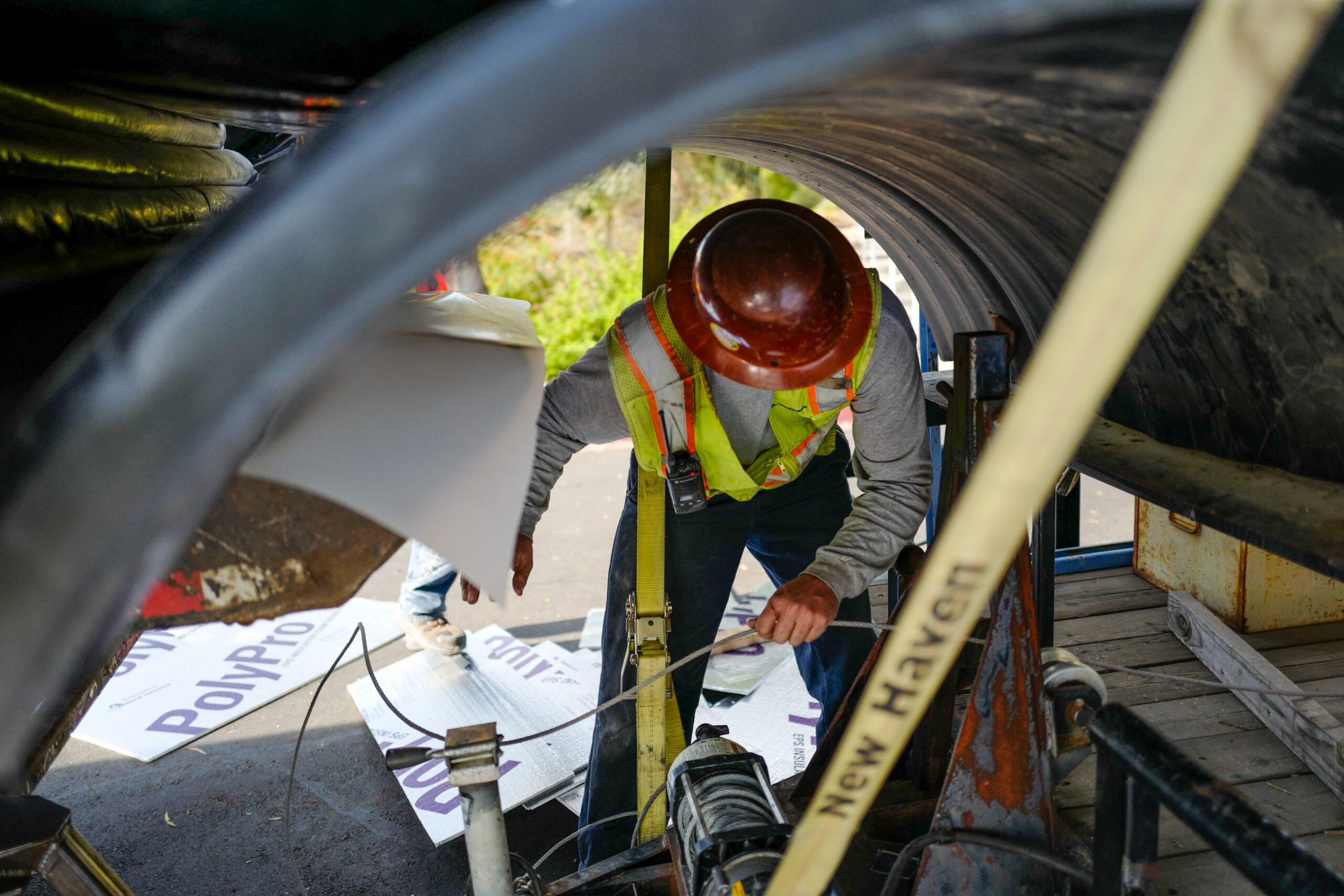
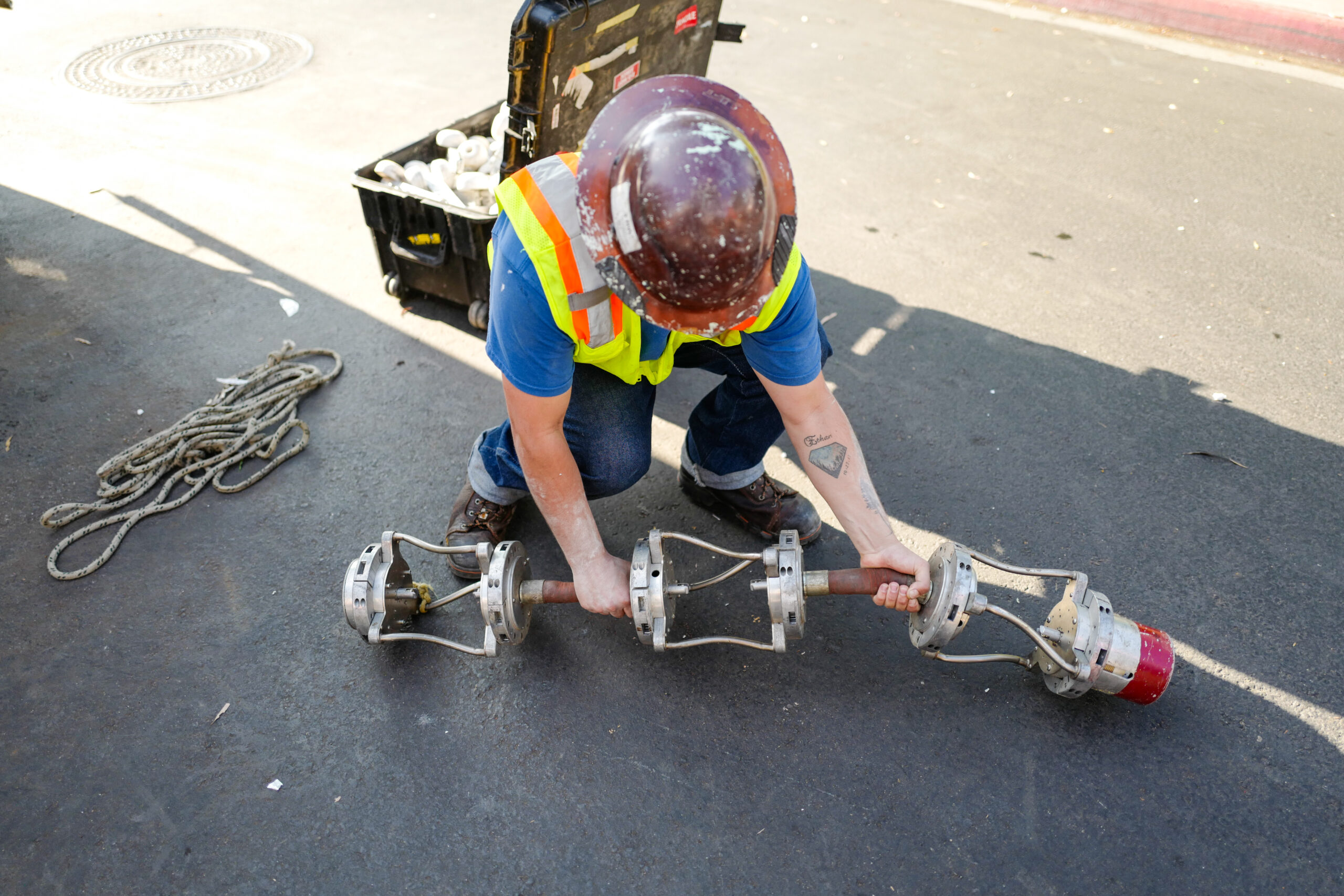
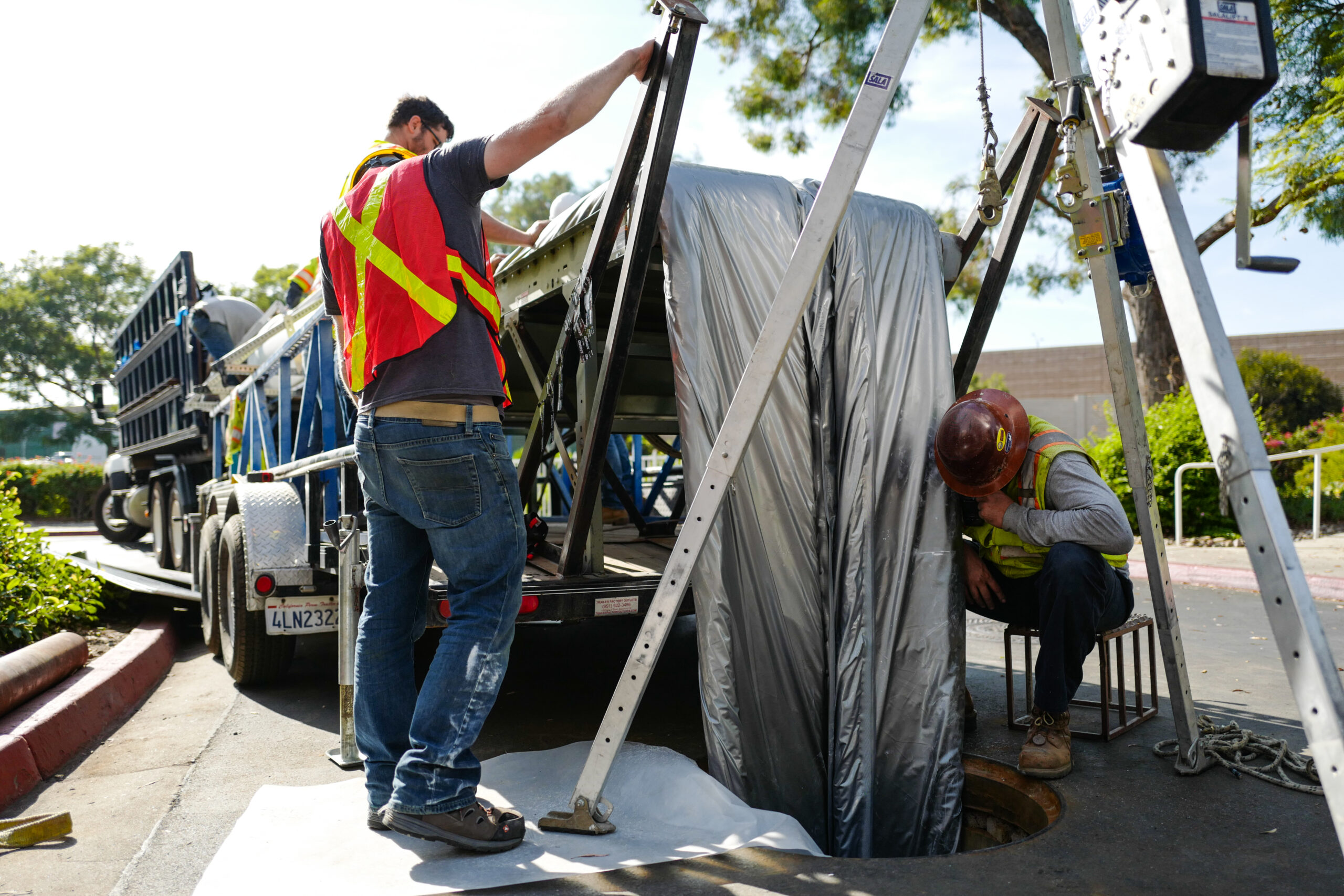
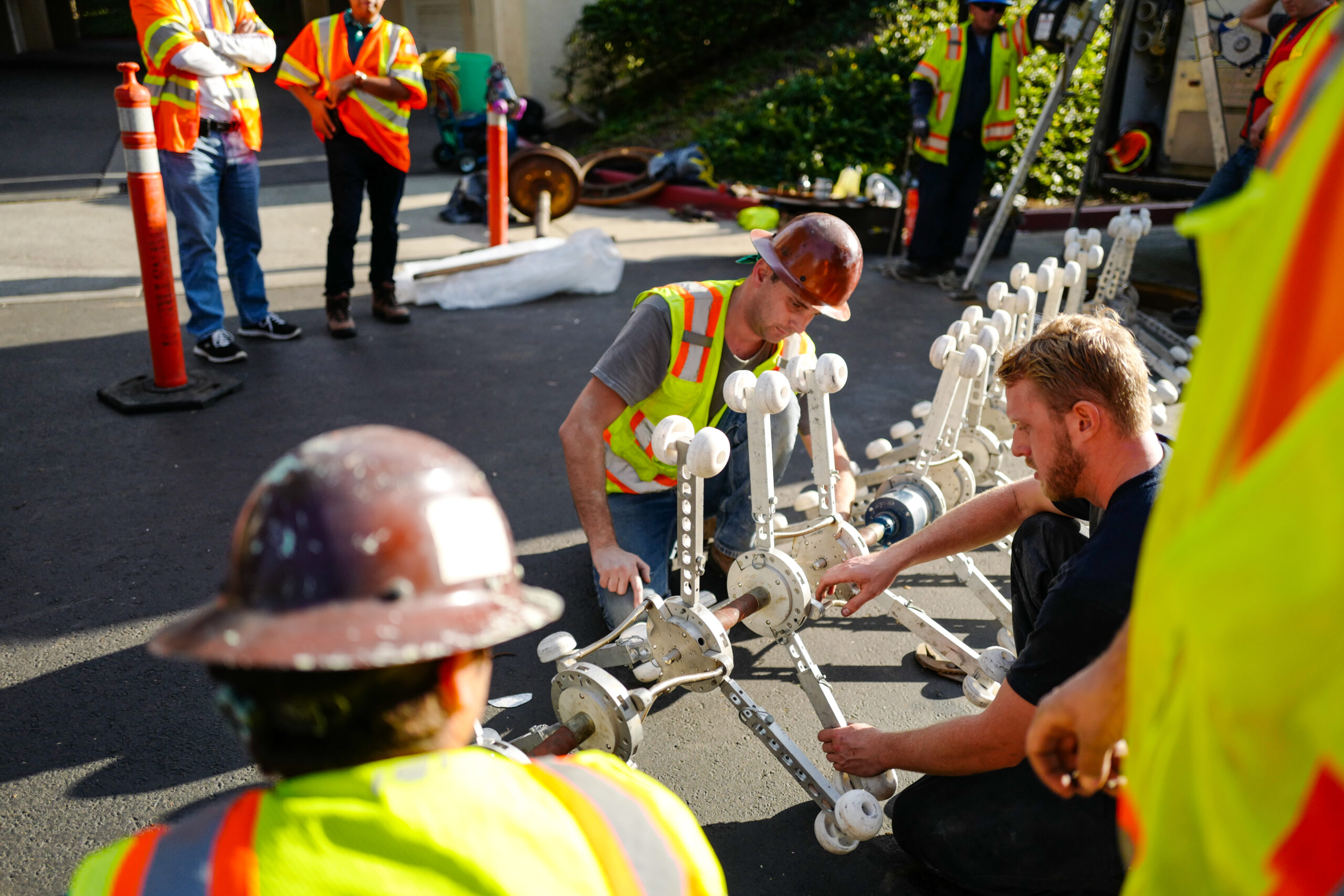
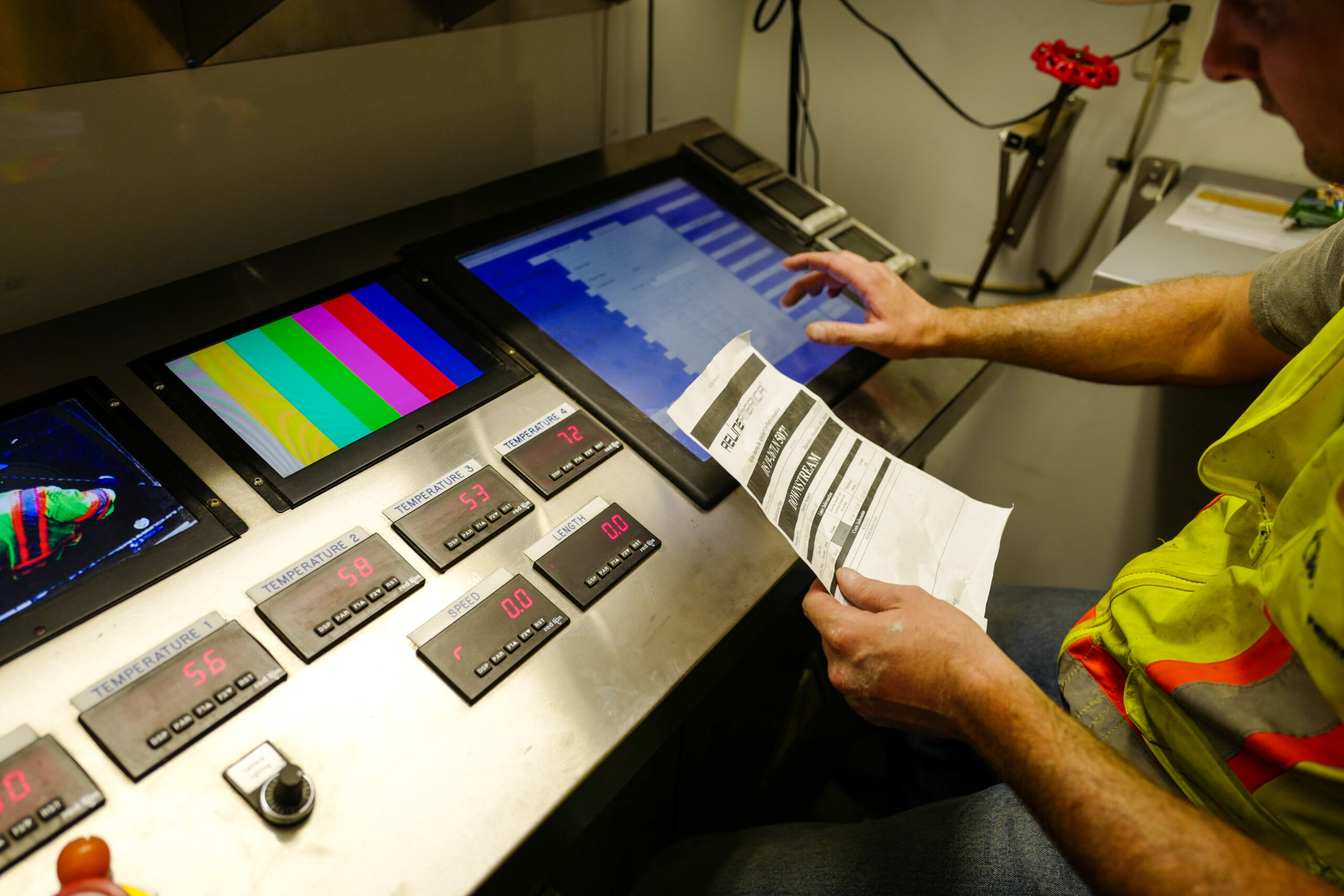
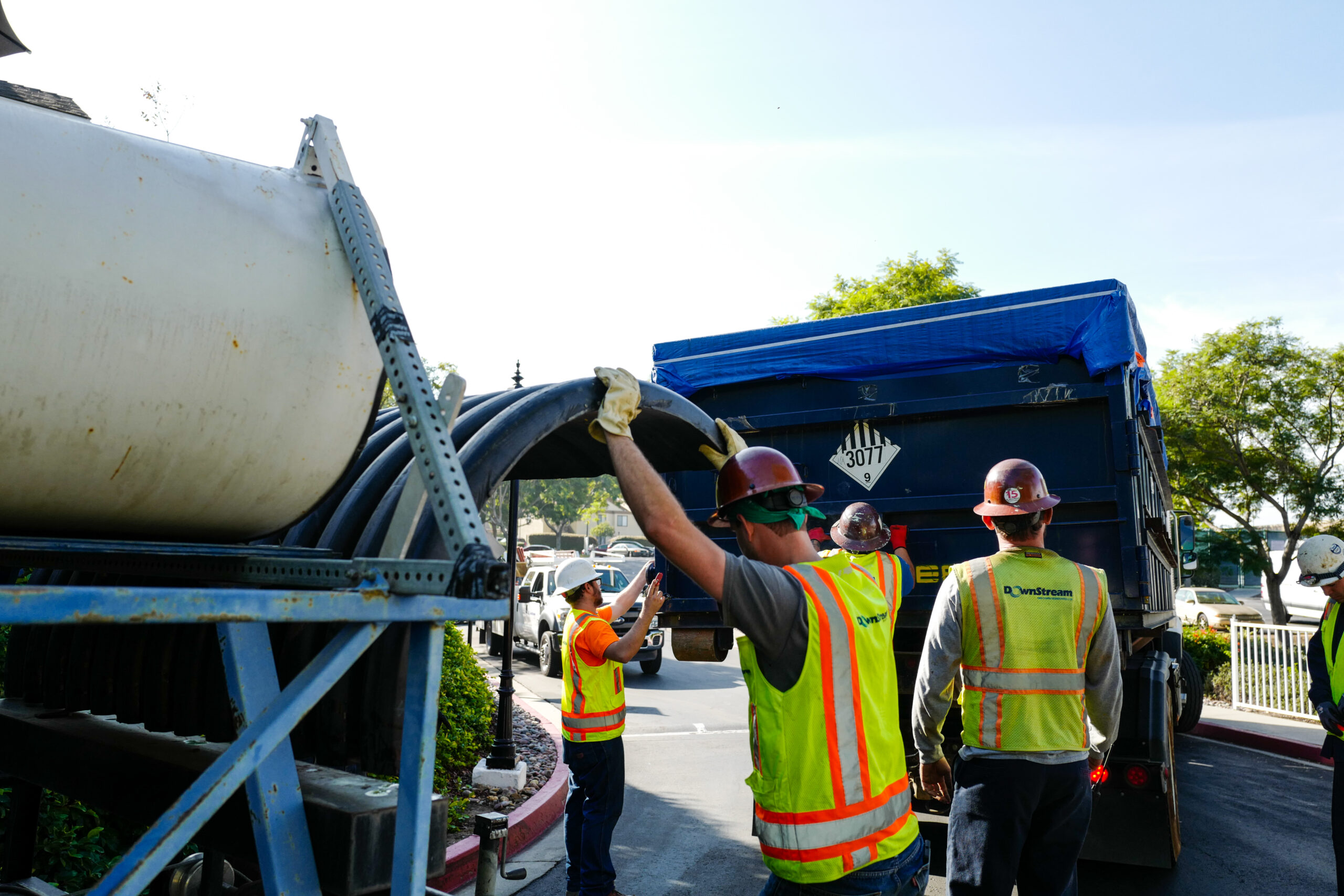
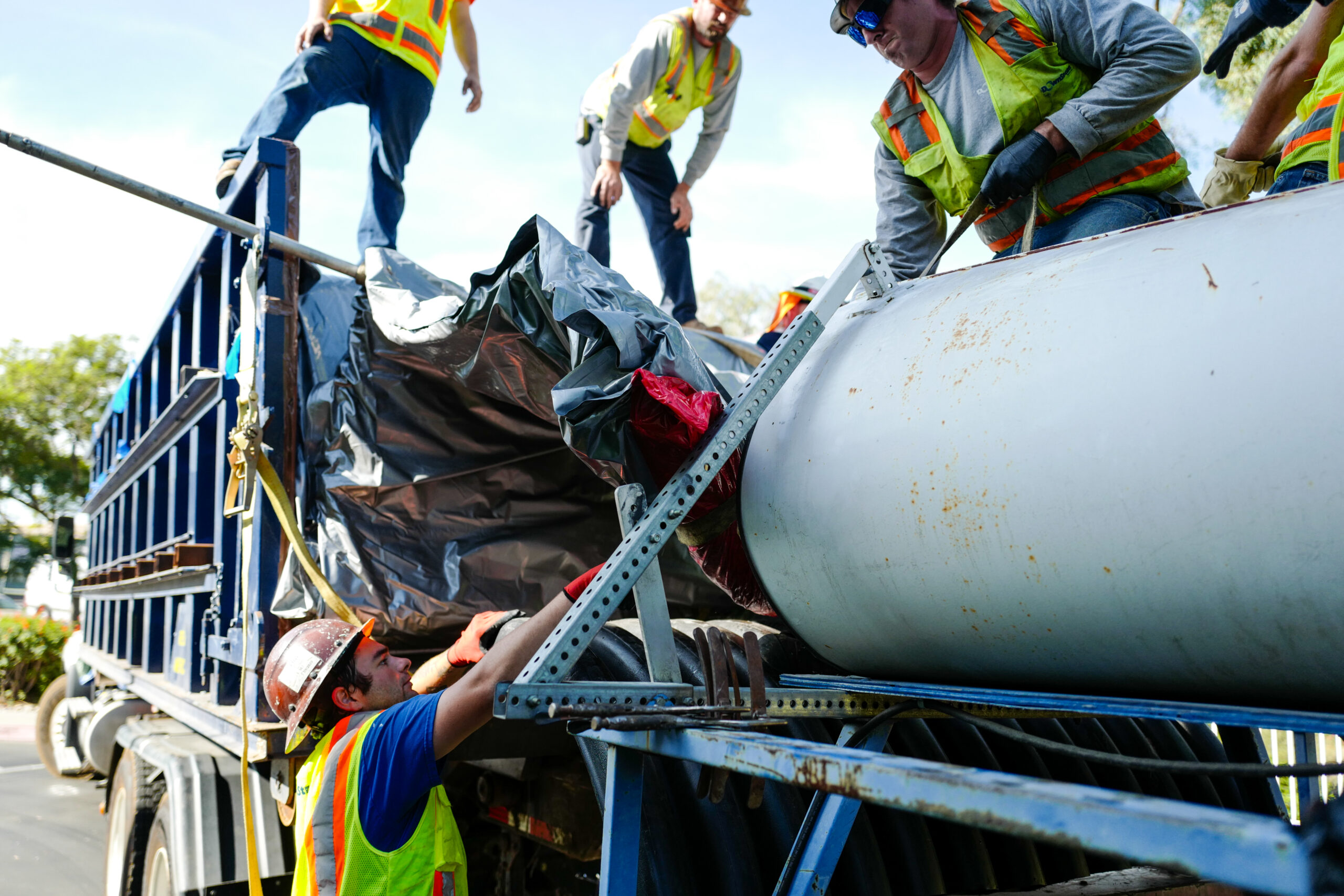
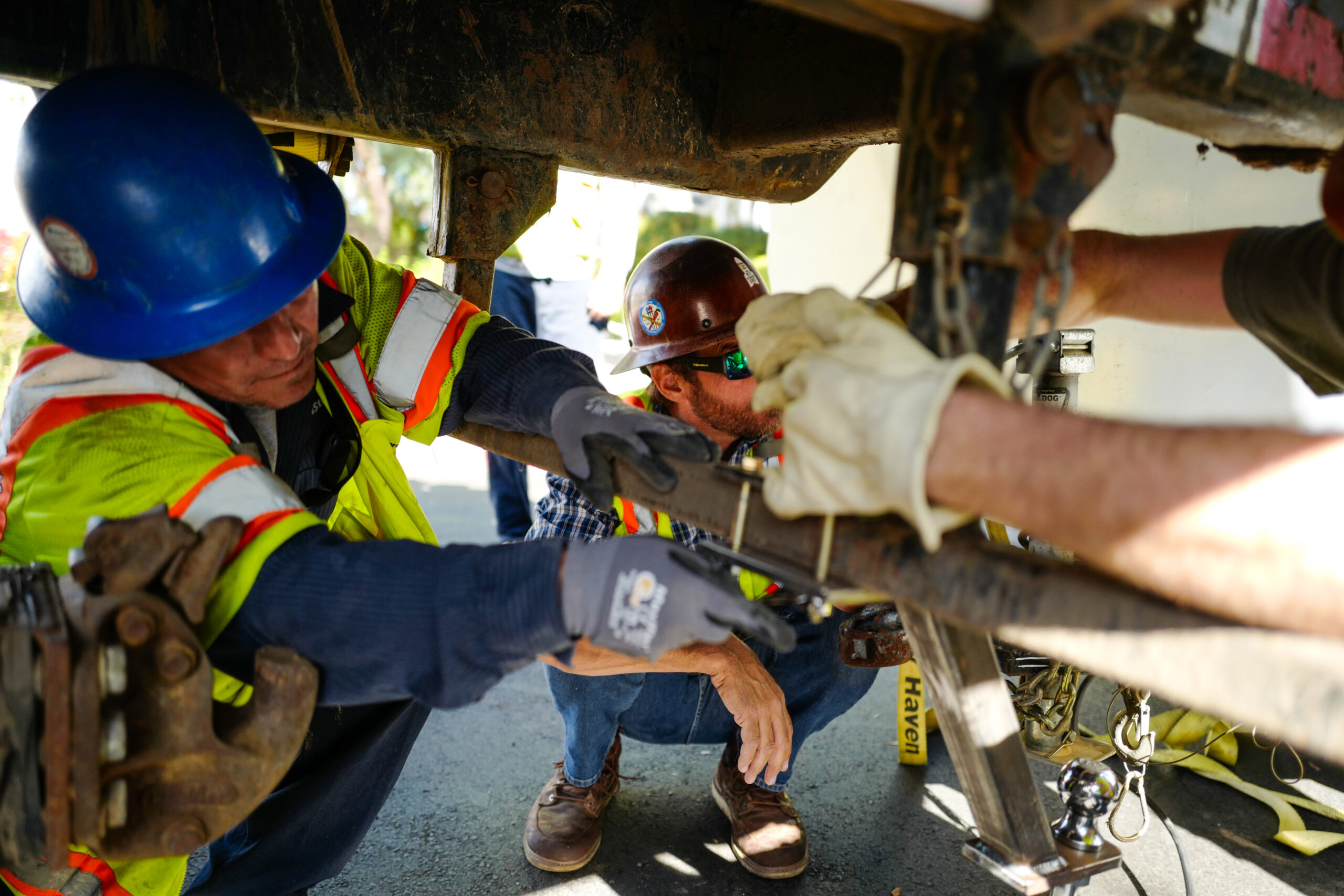
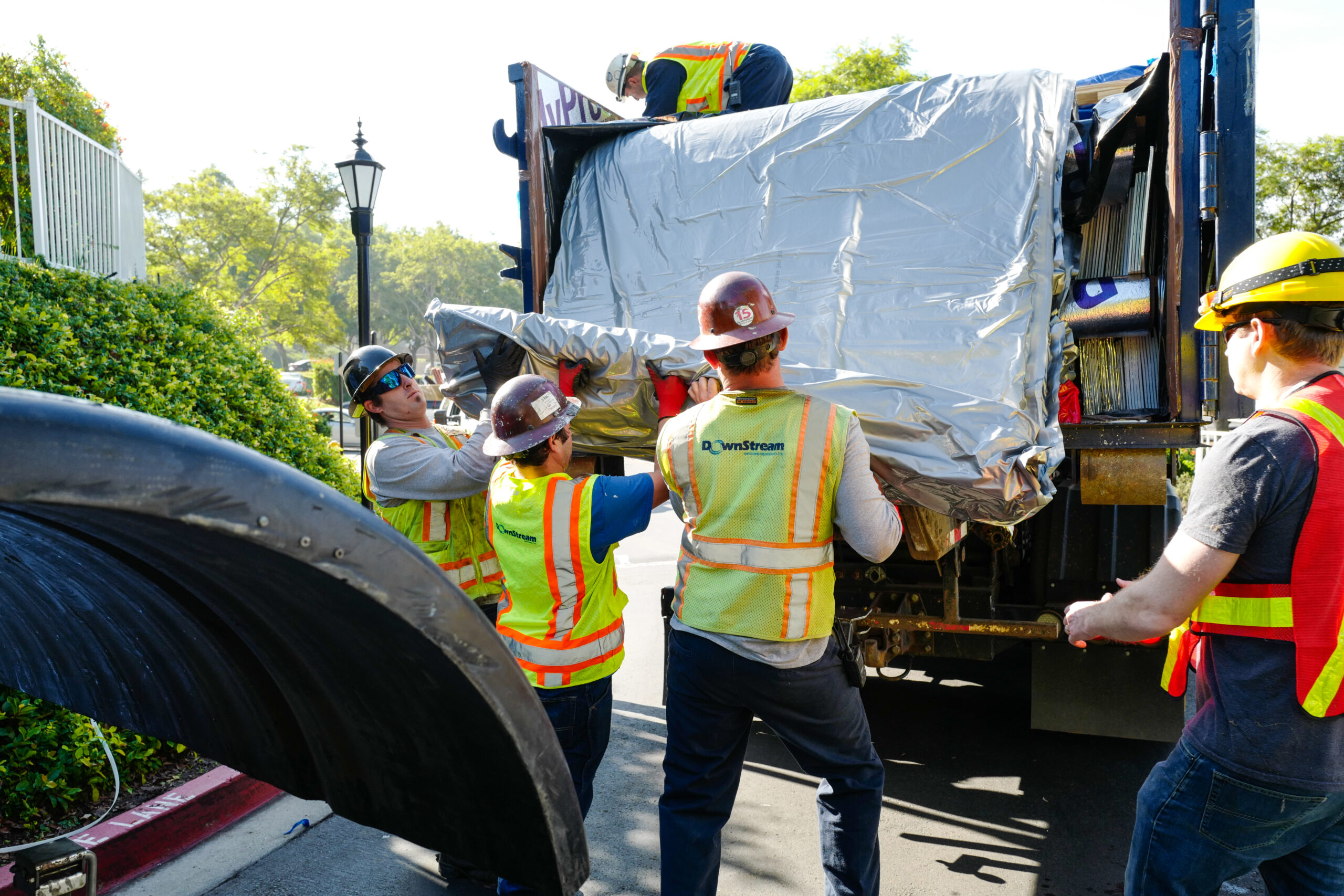
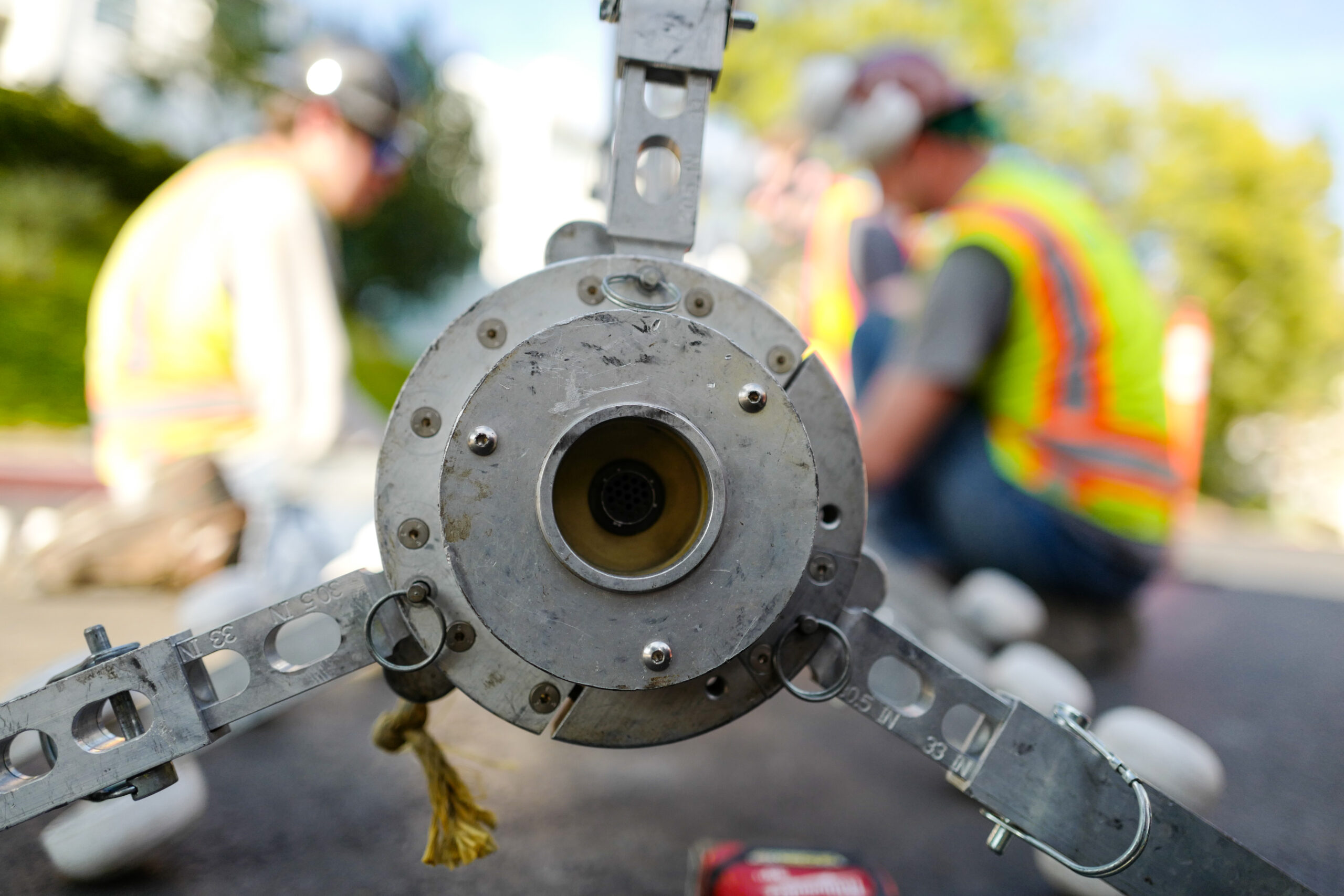
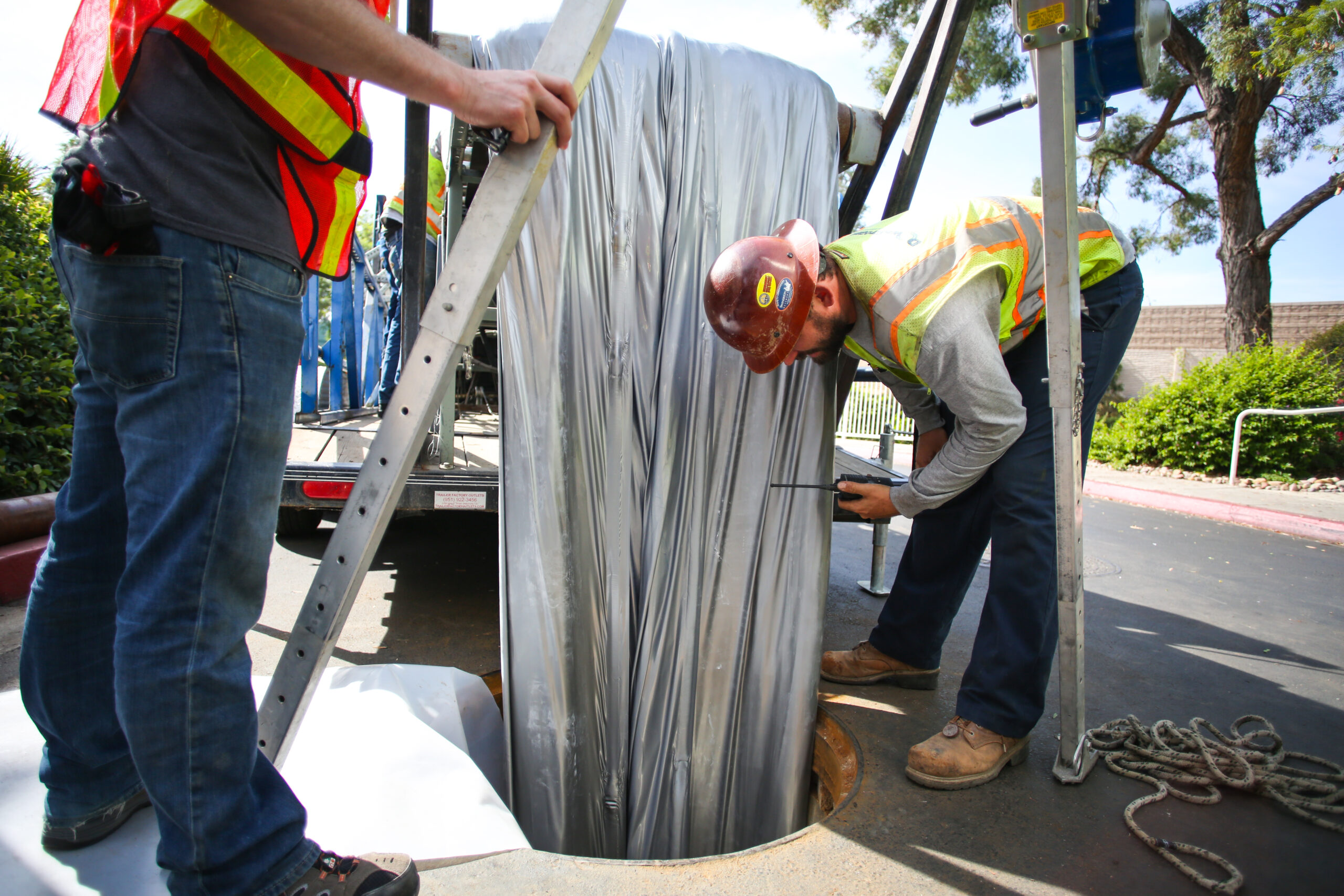
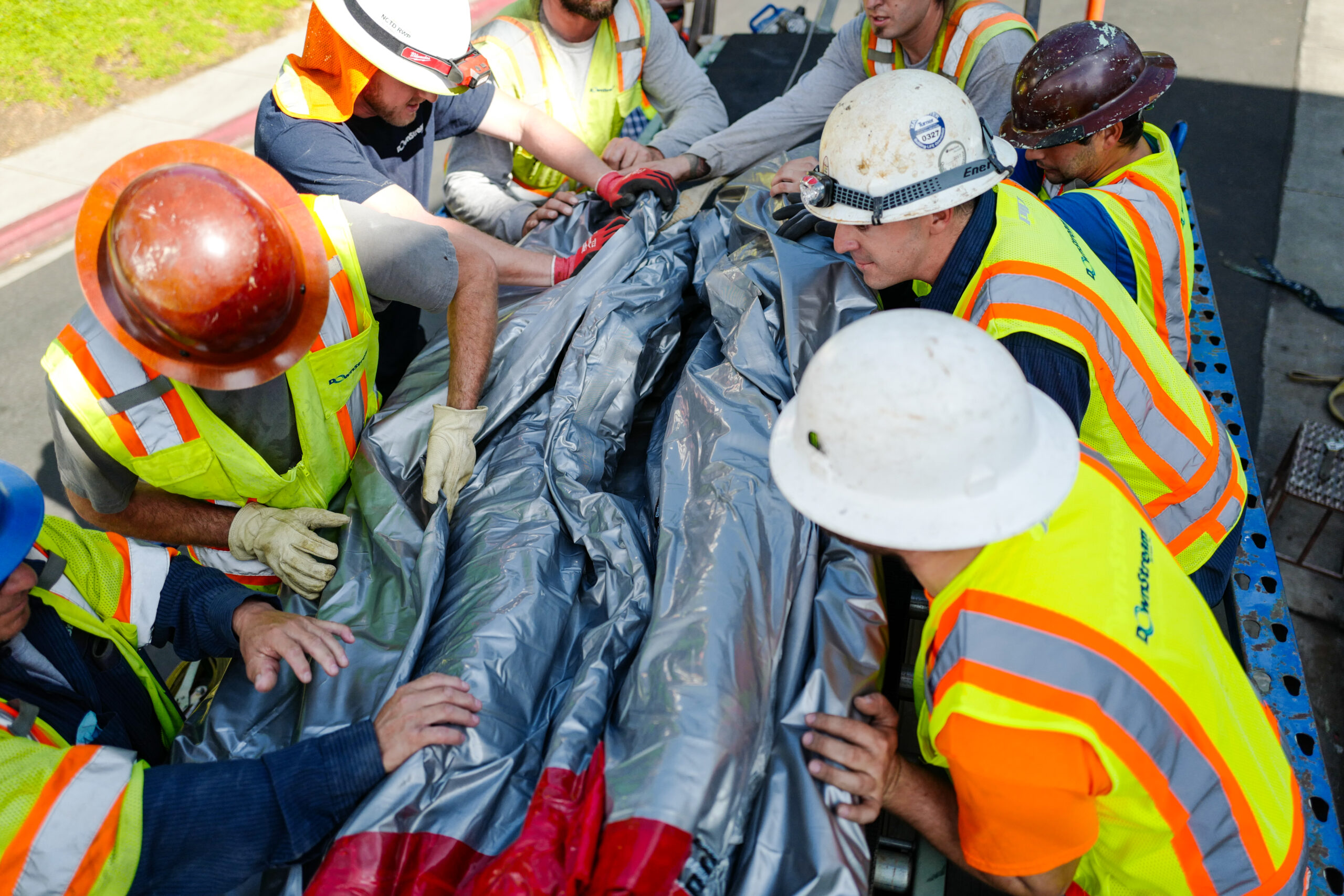
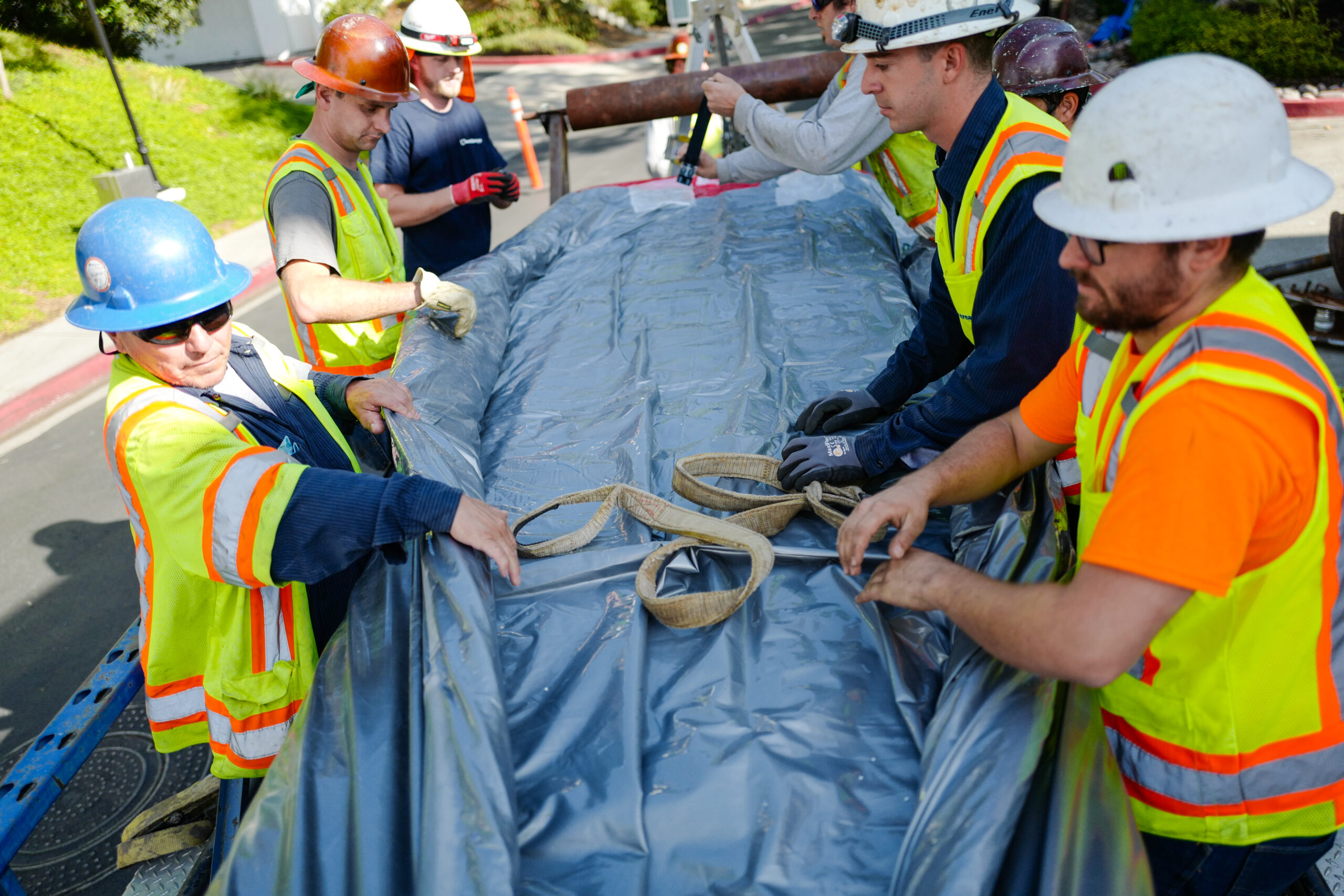
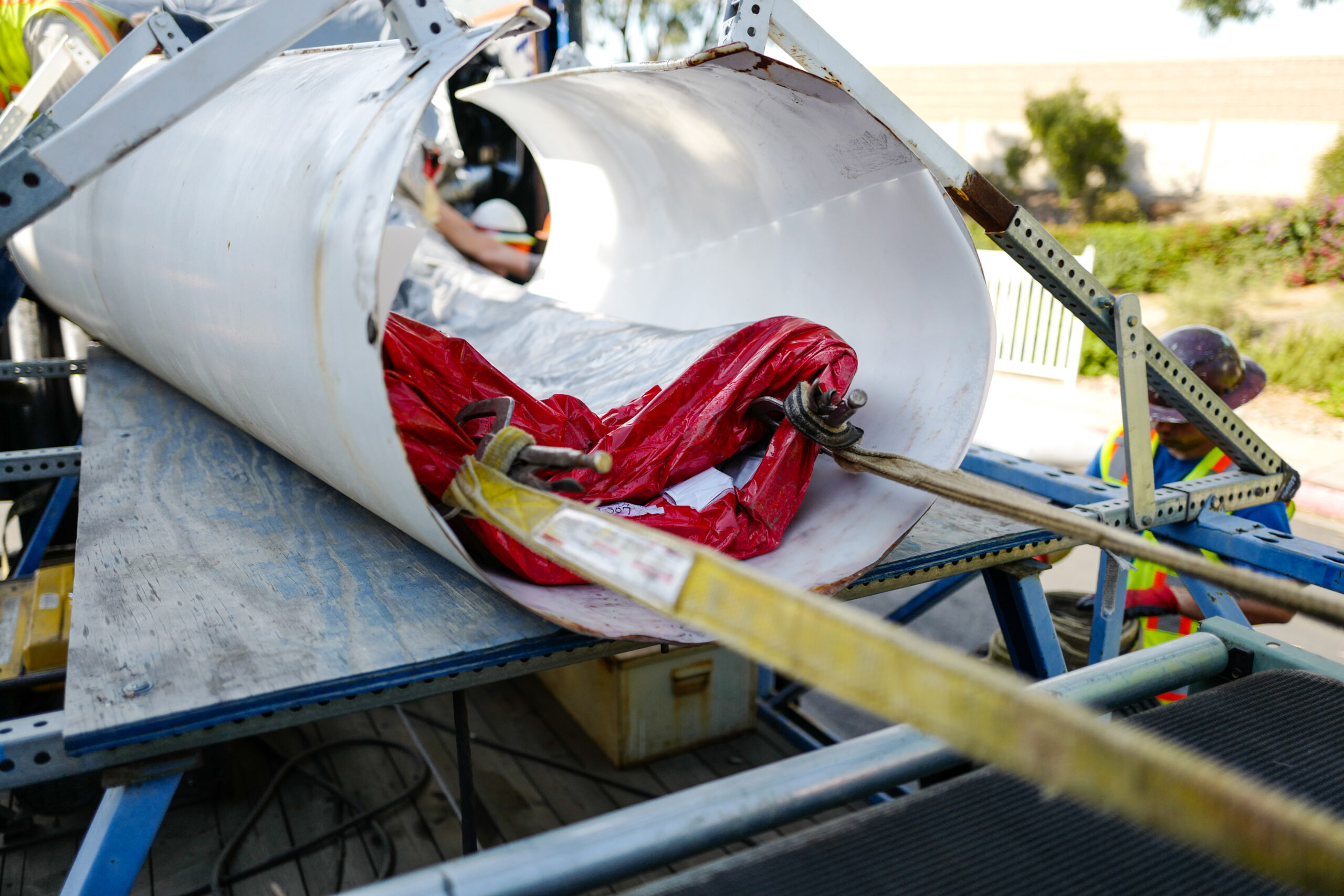
As part of its culvert inspection and rehabilitation program for storm drain assets, California Department of Transportation (Caltrans) proceeded to rehabilitate a drainage line that runs directly underneath a major freeway in the busy metropolis of San Diego, so trenchless technology was a cost-effective solution with the least disturbance to the environment and the public. The repair had to meet an HS20 load rating.
Capstan winch set up over manhole downstream of access point on the slope, behind property where lining would terminate. This manhole was a drop connection. Crew built a special platform inside the box, giving the team something to stand on, to be at level with pipe being lined. A 36-inch lateral and an 8 inch-lateral—assumed to be irrigation drainage lines—were plugged as a precaution, so nothing overflowed. The winch cable was pulled from the downstream manhole, traveling under the freeway to the upstream access point, utilizing a tag line pulled through the pipe by Downstream’s CCTV inspection tractor.
Liner prepared and folded by Downstream’s custom funnel trailer, then attached to constant-tension winch cable, to be carefully pulled downstream for roughly two hours. Extra care was needed, as liner was inserted and maneuvered around a large-radius bend that started 70 ft from insertion point. Once liner was in place, confined space crews entered upstream manhole and crawled 111 feet downstream, to remote start point.
There, installed airtight end cap on liner, while crews across freeway capped their end. Liner then inflated by blower truck. Once it achieved proper inflation pressure, the Reline America UV Curing light train was inserted at the upstream end, through end cap lid. Another smaller winch, called the Third Man, pulled light train from liner cure rig to downstream endpoint. Light train camera inspected liner to ensure it inflated properly and there were no issues before curing process began.
Once quality was assured, 1000 watts of UV curing light were activated, and light train was slowly winched backwards to upstream start point. Cure speed was about 6-12″/minute controlled by system to ensure full cure. Lining workday lasted about 16 hours. Crews were given a much-needed rest period the following day, before returning to perform liner end trimming and begin concrete grouting work to fill annular space.
I/I was eliminated and deterioration of the host pipe made irrelevant. There was limited community disruption, and no dangerous on-road site work.
Reline America, Inc.
Corporate Headquarters
116 Battleground Avenue, Saltville, VA 24370 USA
Toll Free: 866 998 0808 | Local: 276 496 4000
info@relineamerica.com

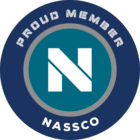
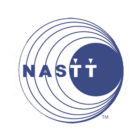

Copyright ©2024 Reline America Inc.